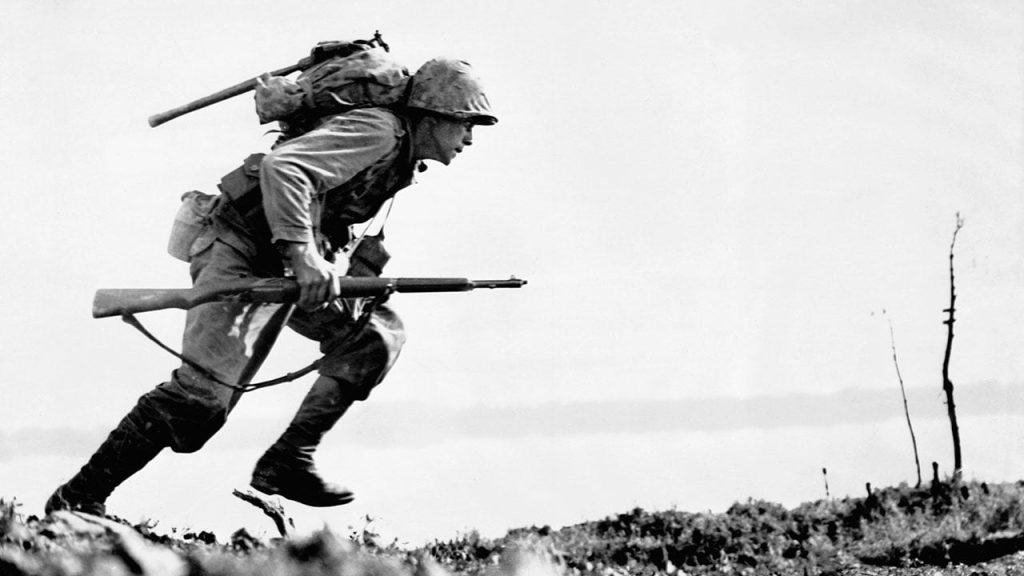On April 1, 1945, the United States launched a large-scale invasion of the Japanese home island of Okinawa, marking the beginning of the Battle of Okinawa. This battle was the largest engagement of World War II in the Pacific Theater and proved to be the last major battle of the war. The nearly three-month-long brutal engagement involved kamikazes, mass civilian suicides, the use of children in combat, and resulted in atrocious casualties on both sides before ending in a U.S. victory on June 22. This victory had a significant impact on the outcome of the war and convinced President Truman that the atomic bomb would be necessary to hasten the end of the conflict and save lives.
The conquest of Okinawa was a strategic move for Allied forces as it provided an airbase for bombers to strike Japan and an advanced anchorage for fleets. The population of Okinawa, about 300,000 people, faced horrific challenges during the battle. Civilians were witnessed leaping to their deaths over cliffs, often with their children, rather than surrender to the advancing U.S. troops. By the time American forces secured the island, over 49,000 casualties were sustained, including more than 12,500 killed or missing. The civilian population of Okinawa also suffered greatly, with estimates as high as 150,000 civilians killed, representing about half of the pre-invasion population of the island.
The intense Battle of Okinawa also saw the horrific escalation of kamikaze attacks by the Japanese, with 1,900 attacks launched during the campaign, striking 149 American ships and leaving nearly 10,000 Americans dead, wounded, or missing. The battle claimed the lives of the top-ranking soldiers on both sides, with both commanding generals being killed. General Ushijima, the Japanese commander, committed harikari, while Lieutenant General Buckner, the American counterpart, was killed by mortar fire, making him the highest-ranking American officer to be killed in World War II. Additionally, renowned war correspondent Ernie Pyle was killed during the battle, adding to the significance of the conflict and its impact on American forces.
The Battle of Okinawa had lasting repercussions, as the losses suffered convinced U.S. war planners that any invasion of Japan would result in unacceptable casualties. Estimates suggested as many as 1 million U.S. servicemen could have been killed in such an invasion, leading President Truman to make the decision to use the atomic bomb to end the war. The legacy of the Battle of Okinawa is felt even today, underscoring the brutal realities of war and the sacrifices made by both military personnel and civilians during this pivotal moment in history.
The Battle of Okinawa represented a turning point in World War II, showcasing the ferocity of the conflict in the Pacific Theater and its impact on the course of the war. The battle’s significance is evident in the scale of casualties, the use of extreme tactics like mass civilian suicides and kamikaze attacks, and the deaths of top-ranking officers on both sides. The aftermath of the battle influenced President Truman’s decision to use the atomic bomb, ultimately bringing an end to the war but leaving a lasting legacy of devastation and sacrifice in its wake.


